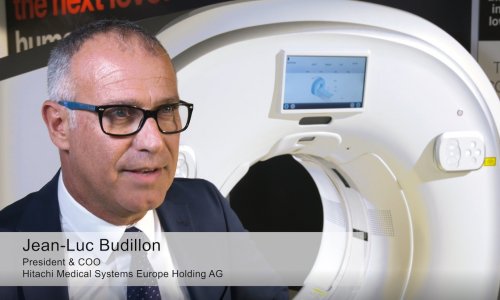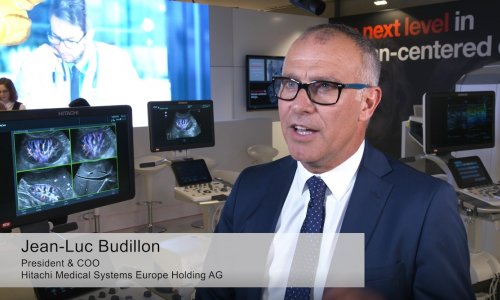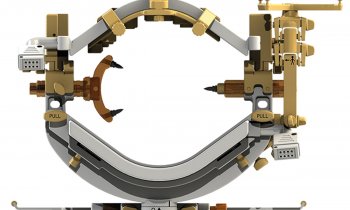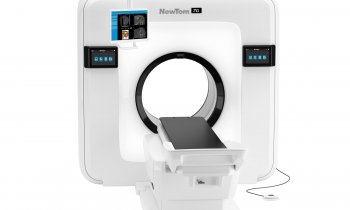Investigating sports injuries
Radiologist Dr Karl-Friedrich Schünemann works in a group* practice in the small German city of Paderborn. Focusing on sports injuries and using MRI, CT and X-ray, the specialist medical team provides services such as neuroradiology, orthopaedics and CT-guided pain therapy. ‘The fact that we count a number of professional athletes among our clients also attracts many amateur athletes who present with interesting sports-related issues,’ he said.
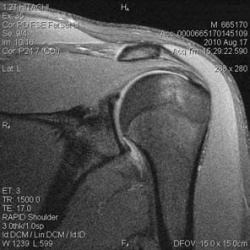
‘From the very beginning we focused on specialised radiology,’ he explained. ‘Today we offer a renowned out-patient spine service and perform many mammographies. We don’t want to do assembly-line medicine; we want to provide excellent diagnostics.'
‘When a player is injured and an examination unclear, the team physician calls me, explains the situation from his point of view, and asks me to perform an in-depth examination,’ said Dr Schünemann. ‘So, when the athlete arrives I already have quite a lot of information and rather targeted questions that need to be answered with MRI. Therefore we can tailor the actual MRI examination to the individual athlete’s situation.’
The basics are the same for a professional athlete as every other patient. ‘No matter what kind of information was provided by the referring physician, we do a comprehensive and in-depth clinical assessment and anamnesis with any patient – whether a professional athlete, an amateur or anyone else. Based on the information we collect and the guidance received from the physician we can formulate a very precise question – which allows us to offer a precise answer. It is a distinct advantage to be able to discuss the case with the team physician prior to the MRI exam. The direct exchange ensures that no information is lost. And certainly, we also discuss the findings of the MRI scan as well as possible next steps, therapy options and a follow-up plan. All in all, the process is highly efficient and fast. After all, an athlete is expected to get back on the playing field as soon as possible and we are expected to help him do just that.’
For radiologists, what is special about sports-related injuries?
‘In sports medicine, MRI is the modality of choice for unclear joint issues. Beyond the thorough clinical assessment and anamnesis for every individual athlete, it’s of utmost importance to gather information on the different training methods and the physical stress exerted during training sessions for the individual sports disciplines. You have to be familiar with the different sports, the techniques used and certainly the typical injuries.
‘Since our team is specialised in the treatment of spinal conditions, such as slipped discs, if necessary, straight after MRI the professional athletes can undergo an interventional procedure, performed with ECLOS, the 16-slice CT from Hitachi.
‘There’s one peculiarity regarding the treatment of professional athletes -- we physicians have to comply with the anti-doping rules. Some athletes with spinal injuries receive cortisone, which means I have to report any cortisone medication to the national anti-doping agency NADA. We fill out a form that we submit to NADA and the athlete receives a copy, which he can present when he is asked to undergo a doping test.
Common injuries
‘Every sport has its own typical injuries and injury patterns because very specific body parts and joints are put under extreme stress. With basketball players, as with players of any other “overhead” sport, such as tennis, we see many shoulder problems. 80-90% of the injuries we see in soccer players concern the knees and ankles.
Use of the Hitachi Oasis
‘The Hitachi Oasis is an open MRI ,which means that the patient is no longer forced into a tunnel-like tube. From the sports medicine point of view the open architecture of the system offers more space and better access. Take basketball players: they are often very tall – over two metres. In addition, they have a strong, muscular build. With other MRI systems we frequently had space problems, not necessarily with all types of examination but, for example, with shoulder and spine examinations – and precisely those kinds of examinations are often needed for athletes.
‘For athletes, and other patients, the advantage is the fact that the joint to be examined can be placed and examined in the centre of the magnetic field. We achieve excellent image quality, which is absolutely comparable to that of a premium-class 1.5 Tesla system.
The open system also facilitates scanning children, because parents can be close to their children, touch them and comfort them. We can examine children from about 4 years of age. It’s not easy to examine a four-year-old, but with the open MRI we’ve been more successful than with the conventional machine – without medication!
‘But the major advantage of the open architecture of the Hitachi Oasis is important to any medical discipline. We found that many more patients than we thought suffer severe anxiety or claustrophobia. Most patients who are frightened of confinement in the machine never even show up for an MRI. But with the open MRI many patients agree to a scan because they don’t consider the machine as scary as conventional MRI.’
How many patients suffer such anxiety?
‘I’d say at least 20-30%; on some days we even see 40% who refuse to be scanned in a conventional MRI system. That means the acceptance of the MRI procedure increases significantly with open architecture.’
* Group practitioners include Hans-Ulrich Jarck MD, Karl-Friedrich Schünemann MD, Jürgen Wiesmann MD, Carsten Figge MD
Details: www.roentgen-paderborn.de
07.09.2010




